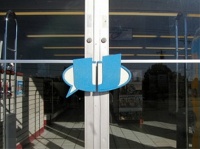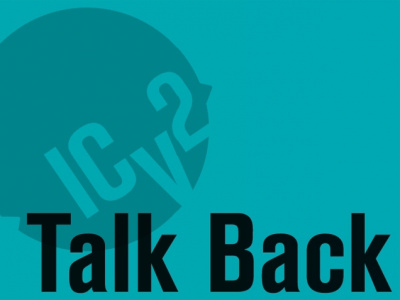 Talk the Talk, Walk the Walk is a new weekly column by Kendall Swafford of Up Up Away! in Cincinnati, Ohio. This week, Kendall looks at the importance of details, details, details.
Talk the Talk, Walk the Walk is a new weekly column by Kendall Swafford of Up Up Away! in Cincinnati, Ohio. This week, Kendall looks at the importance of details, details, details.When last we met, we were chatting of details, details, details. Many of you might think it’s easy for me to lecture on such things; surely if I have time to point out what’s wrong with everyone else’s store, than I must have a staff of people to rely upon. Minions to oversee every little thing, right? Wrong. I’m terrible at delegating, not a fact I’m proud of, and not a skill that’s served me well over the years. I have a couple of part-timers, but they’re mostly for an occasional day off, the sort of thing my wife wishes I would take more of. The fact is, I currently have 2,500 square feet of store to lord over, and I personally oversee all of it. I try not to be a control freak, I really do, but I have a vision for my store, and the end game for that vision is to provide the best possible customer experience, which we’ll get to in a paragraph or two.
Details matter in my store. Signage is consistent and consistently applied. We use no hand-written signs. Ever. Too much signage and the customer ignores all of it. There should be a hierarchy for signage, so the customer can understand what message carries the most weight. A sign alerting them to a clearance sale should have more visual presence than a shelf tag pointing out a restock or a second printing. When it comes to building displays, a consistent manner and set of rules are applied to every display in the store. Obviously, not everything we carry is the same size or shape, so those differences have to be compensated for, but the rules are applied consistently, even though the displays change constantly. If a particular display outgrows the space it’s in, then it gets moved. Iron Man recently “graduated” from a 2ft wide end cap to a 4ft wide space, thanks in part to the expansion of in-print merchandise being published in advance of Iron Man 2. IM will move to the window display once Kick-Ass has had its day in the sun. And so on. Some might argue that moving the displays constantly confuses the customer. Good. I’m not running a Kroger store. If I have have 80,000 square feet to cover, then the milk better be in the same damn place it was last time. But in a store the size of mine, or maybe yours, different rules apply. Leave anything in the same spot for too long and it becomes invisible. It literally disappears in the eyes of a regular customer. Shuffling things around makes them shop your store. And your customers really really want to find new things, I promise. They’re making the effort to come to your store, and they want to know that you’re making the effort too!
Traffic flow matters in my store. How your store is laid out matters. You have the power to literally steer your customers through your store by utilizing an effective layout combined with the carrot on the end of the stick, that carrot being that which they are seeking out. Now, in some parts of the country (it really does seem to be a regional thing) this week’s new stuff is either A) segregated into a separate section, highlighting its newness; “This Week’s New Comics” or B) new releases are integrated into existing displays, sometimes highlighted with a shelf-talker, and sometimes not. Which way is better? I prefer the first method. Thirty or so years ago, it was a bit of a rarity for a comic shop to carry new comics at all, at least here in Ohio. The direct market was in its infancy, and new distribution methods were just being born. So we wanted to highlight the fact that you could get your new comics here too! Segregating all the new product for the week makes sense for a business that routinely serves a regular, largely consistent clientele. It can occasionally be completely counter-intuitive, however. Let’s say a customer comes in looking to buy Stars Wars comics for his son. I can lead him to our Star Wars section, which features comics, graphic novels, toys and games based based upon Star Wars, then I can point out where we keep older issues of Star Wars comics from 1977-present, and then I can mention that over here, in a third location, you’ll find this week’s Star Wars: Whatever #00, ‘cuz it just came out!! What to do, what to do... why should a customer have to go to three different spots in a store the size of mine to find Star Wars merchandise?
See, I don’t have all the answers either. The compromise I’m willing to accept at this point is that the system works for the majority of my customers, and that new or casual customers need a little extra attention anyway, so their hands are already being held. The needs of the many outweigh the needs of the few. I’m constantly looking for a better way, but I don’t think integrating this week’s new merchandise throughout the store is serving the majority of my customer’s needs. I cannot think of another industry that regularly receives nearly 200 brand-new items every seven days. It’s staggering when think in those terms about what we do. 200 new SKUs that have to be added to the system, and the store! To me, it seems wrong to ask the customer to search every part of your store, seeking out the new stuff they want. Yes, it does make them look at stuff they may have ignored before, but it doesn’t serve the customer. I’ve set my store up to guide the customer to the back of the store, along an extra wide main aisle, to where the new stuff is located, in a large section that is flexible, growing from fourteen to twenty feet wide, based upon what (and how much) new stuff arrives that particular week. Along that path are the displays I want them to see, as well as merchandise that they expect to have close at hand; collecting supplies in the return aisle on their way to the checkout counter, a large display near the checkout featuring “Secret This” or “Blackest That” and all its tie-ins, or “civilian” friendly end caps that face the door, such as Stephen King or Buffy The Vampire Slayer.
All of this adds up to what I hope is a great customer experience. I was recently visiting a comic and game store in Tennessee, and the experience was... let’s say lacking. There were four people in the store, and I could here a few gamers yelling in a back room. No music was playing (that’s a column in and of itself) so the store was uncomfortably quiet, except for the gamers. As the clerk/owner/manager was not behind the counter, I had no idea which gentleman worked there, as no one bothered to greet me when I walked in. Not even a raised eyebrow. Said clerk/owner/manager continued his conversation with a customer, and even after that conversation ended, no one asked how I was doing or if I needed anything. And this was a small store, so I couldn’t have been overlooked! The crowning touch? I very large, pungent, what appeared to be chicken meal was splayed out across one of the display cases, as if the clerk/owner/manager had set up a comic store around his kitchen table! A great customer experience? Not exactly.
Serve the customer, not yourself. And no, the customer is not always right, I promise you that. But the customer needs to feel that they matter to you. They went out of their way, whether it was a few steps or several miles, to walk into your store. Make it worth their while. Greet them. Engage them in some small way. Then leave them be to shop. Learn when to ask them if they need help. Even if your store is small, don’t assume they can always find everything they’re looking for. A great customer experience is not art or science. It’s alchemy. And we owe it to our customers, and ourselves, to keep practicing.
The opinions expressed in this column are solely those of the writer, and do not necessarily reflect the views of the editorial staff of ICv2.com.







